Share
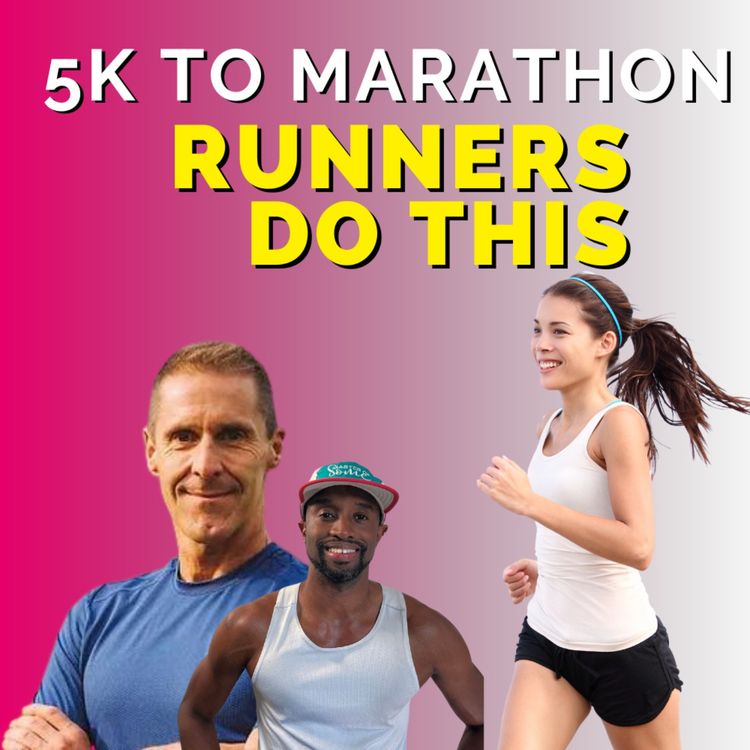
The 1% Better Runner | DLake, Mike Trees & Friends
Are 12x400m intervals the best workout for runners?
Watch & Read This Here
Looking for a cheat code to get pretty fit without suffering? Welcome to the easiest of the hard workout sessions for runners: the 12x400 interval workout.
In this episode, you'll dive into the 12x400 interval workout, a powerful tool for any runner looking to improve their speed, endurance, and overall performance. We break down the science behind this workout, explain why it's so effective, and show you how to implement it into your training. Whether you're aiming for a new personal best or just want to get faster, this episode is packed with all the info to help you get there.
This routine is a favorite of mine because it improves your VO2 max, sharpens your running economy, and prepares your body for the harder and longer work later in the season. Whether you're training for a 5K, 10K, or even a marathon, 12x400 intervals done at the right pace and time of the season might just help you hit your goals. Let’s get into why this workout is the bee's knees and how you can make it part of your training right now.
- [00:00] Importance of the 12x400s workout and its benefits
- [00:03:12] Description of the workout and its purpose in training
- [00:06:31] Discussion on the intensity and pace variations of the workout
- [00:08:41] Using heart rate as a guide for the workout
- [00:12:16] Importance of perceived exertion and pacing during the workout
- [00:14:04] Importance of rest intervals in the workout
- [00:17:54] Discussion on using heart rate as a governor during the workout
- [00:19:46] Differentiating between threshold and tempo workouts
- [00:22:42] Variations and downsides of the 12x400s workout
- [00:27:01] Summary and conclusion of the episode
More episodes
View all episodes
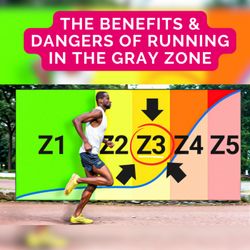
Is Gray Zone 3 Run Training A Waste Of Time?
10:17|Are your runs in the sweet spot or the danger zone?Understanding how to optimize your running training is key to improving performance and avoiding setbacks. This episode dives deep into the often misunderstood Gray Zone, explaining what it is, why it can hinder progress, and when it might actually help. Learn the science behind heart rate zones, the importance of balancing effort, and practical tips to avoid common training mistakes—all while keeping your runs fun and productive.Timestamps[00:54] What are the downsides of training at marathon pace?[01:54] What exactly is running in the Gray Zone?[03:00] Why you should stay in the Gray Zone.[04:14] Pro vs. beginner differences in the Gray Zone.[05:49] The health vs. fitness tradeoff of Gray Zone running.[07:54] Why you should and should not run in the Gray Zone.3 Key IdeasGray Zone Defined: Why the middle training zone hinders progress.Effort Distribution: The 80/20 rule for optimal training balance.Cross-Training Benefits: Mixing low-impact workouts for longevity and consistency.Links & Learnings📈 Get your free 30-day 1% better base training & habits guide - https://dlakecreates.com/basefree🎧 Listen, read and learn more here https://dlakecreates.com/greyzonehttps://instagram.com/dlakecreateshttps://dlakecreates.comhttps://www.strava.com/athletes/120507
24. What It Takes to Achieve Sub-3-Hour Marathons | Chris
08:54||Season 7, Ep. 24Why does this runner loop a soccer field instead of exploring scenic trails?Learn how simple habits and small daily changes can transform your running performance. From breaking mental barriers to establishing a consistent training routine, this episode shares actionable insights from a runner striving to go sub-3 hours. Whether you're training for a marathon or just starting, these tips will help you become a smarter, more resilient athlete.Key TakeawaysSimple habits like running the same route can reduce decision fatigue and improve focus.Running without music can build mental resilience and deepen the running experience.Incremental improvement leads to long-term success—1% better every day matters.Timestamps[00:00:00] Introduction to the 90-minute long run and marathon training goals.[00:01:17] Chris’s current marathon focus and goal of breaking sub-3 hours.[00:02:18] The strategy: pacing smartly and avoiding common mistakes in long runs.[00:03:22] Chris’s soccer background and how it prepared him for running.[00:04:38] Why Chris began running consistently and the mental benefits of the habit.[00:05:19] The power of route consistency and why Centennial Park is a favorite.[00:06:09] Running laps on a soccer field: mental challenges and lessons learned.[00:06:52] Chris’s transition to running without music and the mental toughness it builds.[00:07:22] Key advice for runners: staying consistent and running for life.[00:08:00] Closing thoughts: how small habits can lead to marathon breakthroughs.Links & LearningsThe One Percent Better Runner NewsletterDLake Runs on InstagramChris on Strava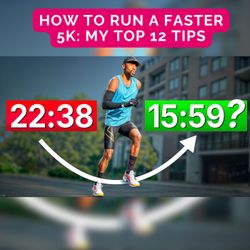
25. How To Run A Faster 5k: My Top 12 Tips
18:46||Season 7, Ep. 25Are you really racing the distance at your highest potential? How much do you need to suffer? And what does it take to race a 5k? At your peak effort and intelligence, stick around, don't worry, because I'm going to answer all those questions and more by giving you my top 12, 12 tips on racing the 5k that I've learned from my experience, research, and talking with all of the experts on the 5k.Running your best 5K takes more than just lacing up your shoes—it’s about training smarter, not harder. From mastering the 80/20 rule and incorporating targeted strength training to reframing your mindset on race day, this episode provides 12 actionable tips to elevate your performance. Whether you’re chasing a personal best or tackling a 5K for the first time, these strategies will help you hit the ground running.Timestamps Of What You'll Learn[00:00] The 5K: A Gateway to Bigger Challenges[00:22] Are You Reaching Your Full Potential?[01:17] Structure Your Training Into Periods & Blocks[02:51] Use The 80/20 Rule[04:09] Vary Your Speedwork[05:59] Strength Training Tips for Runners[06:45] Nutrition’s Role in Training and Performance[07:47] How To Actually Run Your Fastest 5k[08:37] Why Cross-Training Improves Your 5K[09:47] Time Trials: The Key to Mental Toughness[10:19] Dial In Your Recovery[11:24] Reframing Your 5K Mindset[13:17] The 1% Better Runner's Virtous & Viscious Cycle[14:38] Preparing for Race Day: Warm-Ups and PacingKey Takeaways80/20 Training Rule: Focus 80% on easy runs and 20% on speed to maximize gains.Strength Training for Runners: Essential for injury prevention and better performance.Reframing Goals: Focus on your best performance, not just a faster time.Links & Learnings📈 Get your free 1% better in 6-weeks 5k training and habits guide🎧 Listen, read and learn more hereOPB - Virtous vs. Viscious Run Cyclehttps://instagram.com/dlakecreateshttps://www.strava.com/athletes/120507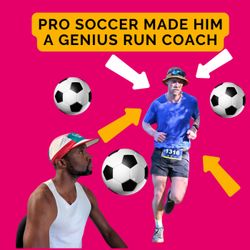
22. What Runners Can Learn from a Pro Soccer Player | Greg Pearson
21:52||Season 7, Ep. 22Every time you skip recovery, you’re leaving future progress on the table.What if your running habits could change your life? In this episode, you’ll discover how structure and pacing can unlock both physical and mental breakthroughs. Greg Pearson, a former pro soccer player turned running coach, shares the mindset shifts, recovery strategies, and training practices that have helped him and his athletes consistently improve. Learn what it takes to make running sustainable for life, not just a season.Timestamps of What You'll Get From This[00:00] Why recovery is the key to progress.[00:17] Pacing: The ultimate superpower for runners.[00:53] Easy runs and building your best fitness.[01:36] Lessons from a pro soccer player turned runner.[04:07] The value of structure in athletic success.[08:36] Identity shifts and the transition to running.[12:11] Coaching philosophy: Helping runners achieve goals sustainably.[13:26] Mental growth through running challenges.[18:23] The importance of starting small and scaling smartly.[20:40] "You cannot fail if you do not quit."Links & LearningsGet Free 30-day base training and habits guide here The One Percent Better Runner NewsletterDLake Runs on InstagramGreg on InstagramJoin Greg’s Coaching Waitlist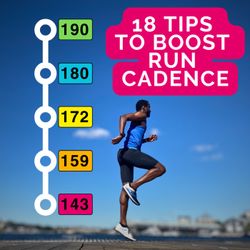
20. How To Improve, Increase Running Cadence To Become A Faster & Injury-free Runner
18:58||Season 7, Ep. 20Imagine running faster and stronger but with less effort and all from one small adjustment. What is it? Increasing your run cadence - But how do you actually do it? Listen on to find out.Discover how to unlock your full running potential with one small yet powerful adjustment—your cadence. Learn why it matters for efficiency, injury prevention, and speed, and explore 18 proven strategies to improve it at your own pace.From beginner-friendly tweaks like stride shortening to advanced drills and strength training, this episode delivers a roadmap to running stronger, faster, and injury-free.Get our Free 6 month plan to increase your run cadenceTimestamps of What You’ll Learn[00:00] Introduction: How cadence can improve your running.[0:21] Why I’m obsessed with run cadence[1:12] Why you should listen to me[1:40] What You will get from this[2:29] What is run cadence exactly?[2:40] Why should we care about cadence?[03:52] Over-striding explained: Why it leads to injuries like runner's knee.[04:25] How to measure your cadence with simple tools or tech.[05:53] The 180 steps per minute myth and its applicability.[06:30] Adjusting cadence for different body types and heights.[09:50] Beginner strategies for improving cadence: Shorter strides, metronomes, and playlists.[14:09] Advanced techniques: Barefoot running, hill repeats, and plyometric drills.[16:10] Strength training tips for building power and elasticity.[16:42] Working with professionals to tailor your cadence improvement plan.[18:00] Final thoughts: Long-term benefits of gradual cadence changes.Key TakeawaysWhy Cadence Matters: Higher cadence can improve running efficiency, reduce injury risk, and potentially boost speed—when done correctly.How to Measure Cadence: Tools like smartwatches and apps simplify tracking your steps per minute for more accurate adjustments.Step-by-Step Cadence Training: From stride shortening to strength training, there are 18 actionable tips to gradually enhance your cadence safely.Links & Future Learnings Free 6 month plan to increase your run cadenceWatch, read and listen to this on your next run or workout7 tips to Improve your running formUse Run Form Drills and Plyometrics to Become an Injury-Free MonstersDr. Marie Whitt Fit on InstagramDr. Marie Whitt Fit on YouTubeDLake Runs on InstagramScientific Study - Effect of Increasing Running Cadence on Peak Impact Force in an Outdoor Environment
20. Beta Alanine For Runners - The Science Of This Unknown Protein | Nov 2024 News
14:39||Season 7, Ep. 20Want to make every run feel a little easier? Try this approach for 1% better results.In this episode, you’ll learn why small, intentional adjustments in your training can create massive improvements in the long run. From understanding the science behind beta-alanine as an endurance booster to rethinking the way you approach fartlek workouts, this session covers the incremental changes that lead to 1% daily gains. Plus, you’ll learn why choosing the right weather app matters more than you might think and how to make better decisions based on accurate forecasts.Timestamps[00:00] Introduction to 1% Better Philosophy[00:36] Why long-term gains matter more than quick fixes[01:12] Beta-alanine: The slow-burn supplement for endurance[02:24] How beta alanine reduces muscle fatigue[03:49] Managing side effects: Tips for a comfortable dosage[05:41] The importance of checking accurate weather forecasts[08:12] Why most weather apps aren’t reliable[10:27] Tackling fartlek workouts with structure[12:33] Effective gear planning based on accurate forecasts[13:10] Closing thoughts on long-term commitment in runningKey TakeawaysSlow Progress with Supplements: Beta-alanine isn’t an instant boost; it requires weeks of consistent use to benefit endurance and reduce fatigue.Structured Fartlek Workouts: By adding structure to fartlek sessions, runners can better manage pacing and avoid injury, making the workout more effective.Choosing the Right Weather App: Not all weather apps are accurate. Selecting one tailored to your location can make a big difference in planning your runs.Links For GreatnessGet your free 1% better 30-day guide to consistencyWatch and read the full episode hereDLake Runs on InstagramFollow my training on Strava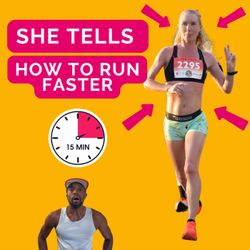
19. How Inconsistency Is Killing Your Race Times — Elite Runner's Secrets | Simply Audrey
13:50||Season 7, Ep. 19Training inconsistently? Here’s how that might be holding back your race goals.In this episode, we dive into what separates fast runners from the fastest: consistency. Learn from Audrey’s journey to shave time off her 5K and uncover what training habits might be keeping you from your personal best. We’ll cover her favorite dynamic warm-ups, interval tips, and lifestyle tweaks to keep you injury-free and consistently on track for your goals. Whether you're an elite runner or just getting started, this episode has practical takeaways for anyone looking to improve!Timestamps of What You’ll Learn[00:00] Why Consistency is Key to Training[01:09] First Time Meeting Audrey[01:45] Barriers to Breaking the 15-Minute Mark[02:42] Dynamic Warm-Up Routine Breakdown[03:35] Goals and Fitness Priorities[04:17] Fun Fuel Choices for Training Days[06:06] Learning from Interval Mistakes[07:52] Final 400m Interval Push[09:02] How to Train for Speed in 800m[11:25] Breaking Bad Habits for ConsistencyLinks For GreatnessGet your free 1% better 30-day guide to consistencyDLake Runs on InstagramAudrey on InstagramWatch and read the full episode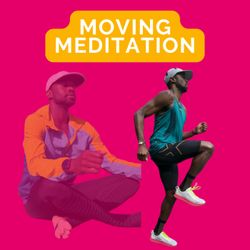
18. Running Meditation - Improve Your Mindset to Run Further & Faster
12:08||Season 7, Ep. 18Are you too mindful on your runs? It might be time to dial it back.I dive into the surprising downside of being too mindful during your runs and how it can disrupt your flow and performance. We explore the fine line between conscious awareness and muscle memory, revealing how to harness mindfulness effectively without letting it derail your progress.Learn how to find the right balance and implement techniques that keep you in the zone, effortlessly improving your running experience.TIMESTAMPS OF WHAT YOU'LL LEARN- [00:00:00] - Introduction and Overview- [00:00:15] - Setting the Stage for the Discussion on Mindfulness in Running- [00:01:15] - The 14-Mile Run Story: A Personal Story Where Mindfulness Backfired During a Long Run- [00:02:22] - The Moment of Disruption: How Being Overly Mindful Threw Off My Stride and Rhythm- [00:02:49] - Science of Mindfulness: Exploring Research on Mindfulness and Automaticity in Athletic Performance- [00:03:54] - Balancing Awareness and Flow: Finding the Right Balance Between Conscious Awareness and Muscle Memory- [00:04:30] - Challenges of Excessive Mindfulness: Too Much Mindfulness Can Hinder Running Performance- [00:06:11] - Real-World Application: Practical Advice on Applying Mindfulness Without Overthinking- [00:08:01] - Importance of Muscle Memory: Understanding the Role of Muscle Memory in Sustaining Long Runs- [00:08:51] - Achieving Meditative Flow: Techniques for Entering a Flow State Without Disrupting Your Run- [00:10:37] - Final Thoughts and Tips: Concluding Insights and Actionable Advice for Mindful RunningLINKS & LEARNINGS- The One Percent Better Runner Newsletter - https://dlakecreates.com/news- DLake Runs on Instagram - https://instagram.com/dlakecreates- Can Mindfulness Backfire? https://www.psychologytoday.com/us/blog/the-athletes-way/201311/can-mindfulness-backfire- Listen, read and learn more here https://dlakecreates.com/mindful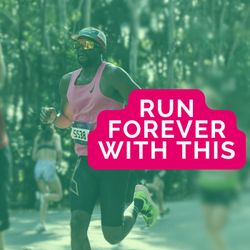
17. Top 11 Ways To Run Longer & Farther Without Hitting The Wall
56:24||Season 7, Ep. 17What if running farther wasn’t about speed, but strategy?In this episode, we dive into the essential strategies to keep you running stronger and longer, without the burnout. Learn the time-tested techniques that focus on stamina over speed, including how to prevent injuries, fuel your body effectively, and make the right adjustments in your routine. These tips will help you push through barriers and become a more resilient runner, all while feeling fresher on every run. Whether you're preparing for your first marathon or just want to improve your daily runs, these strategies are your foundation for long-term success.Get your free run farther 1% better each day for 30 days guide here Timestamps & Learnings[00:00] Cavemen and aerobic base[01:39] #1 PRACTICE RUNNING SLOW[02:12] #2 USE THE TALK TEST[03:48] #3 FIND A RACE AND/OR JOIN A CLUB[04:28] 8 MORE KEY STEPS THAT WILL WORK EVEN BETTER[05:19] #4 STRENGTH TRAINING[06:47] #5 FOOTWEAR[08:01] #6 DIET & NUTRITION[09:38] #7 RECOVERY STRATEGIES[11:04] #8 CROSS TRAINING[12:02] #9 TRACK PROGRESS[12:42] #10 FOLLOW THE 10% RULE[13:48] #11 MENTAL STRATEGIES AND DEALING WITH A SETBACK[15:11] FINAL THOUGHTSLinks & LearningsGet your free run farther 1% better each day for 30 days guide here The One Percent Better Runner NewsletterEverything You need to know about Base Zone 2 Aerobic Running ToolkitDaren DLake on InstagramJames Dunn on how to run far without tiringRun Strength Training Toolkit5 zone vs 3 zone HR training explainedCan a new or experienced runner out run a bad dietWhy rest, sleep and recovery are so importantMindfulness and getting 1% better each day/month/year